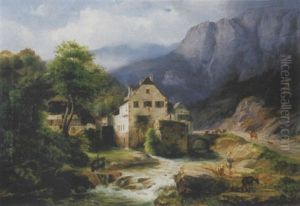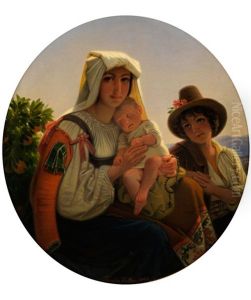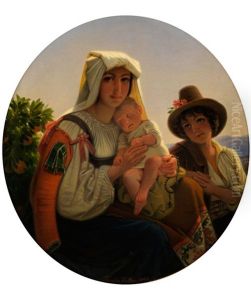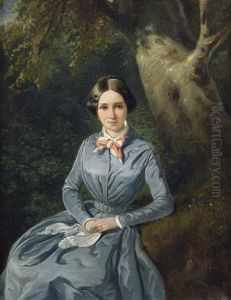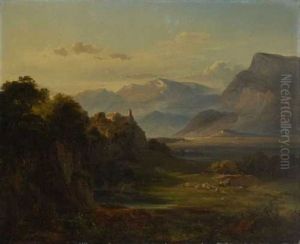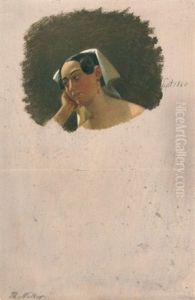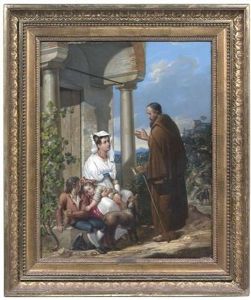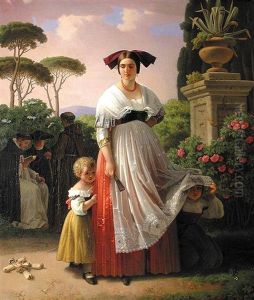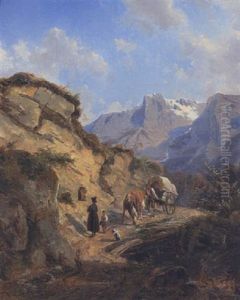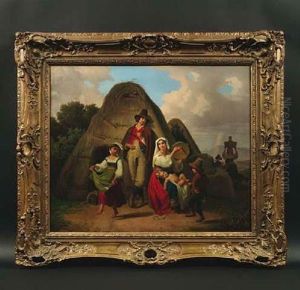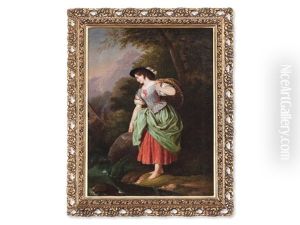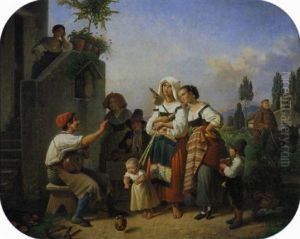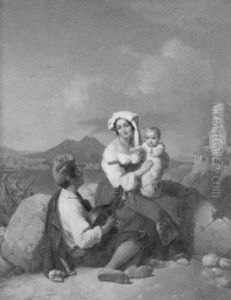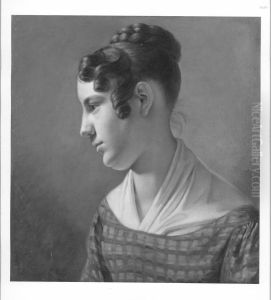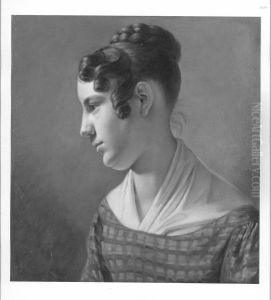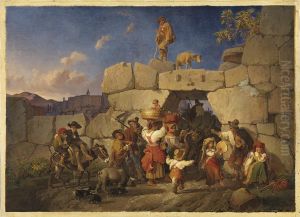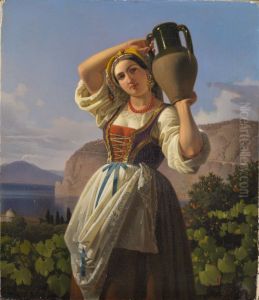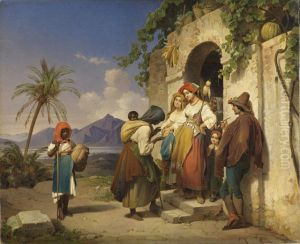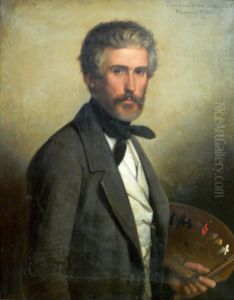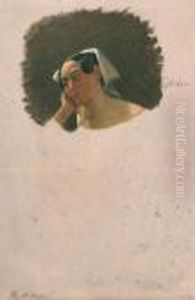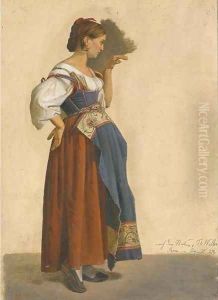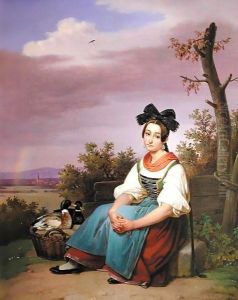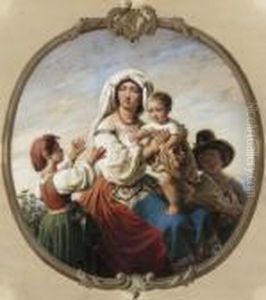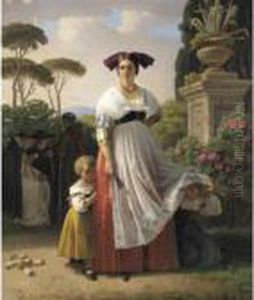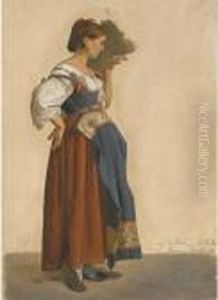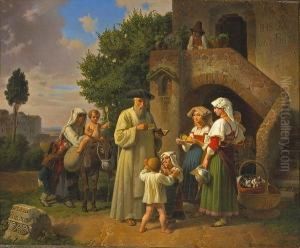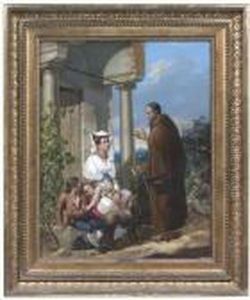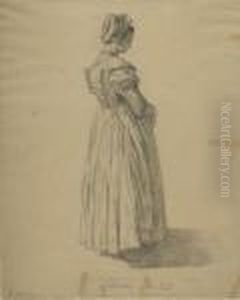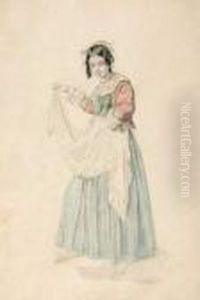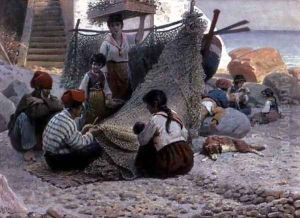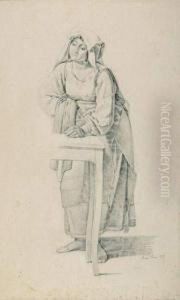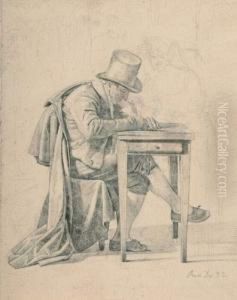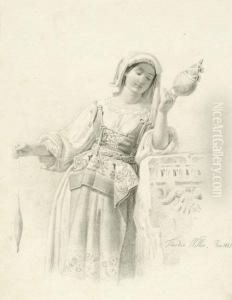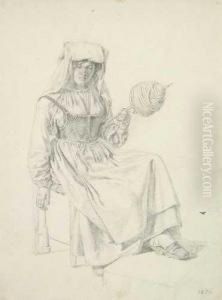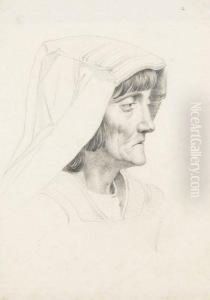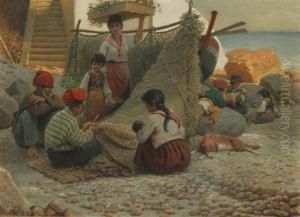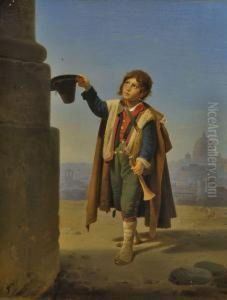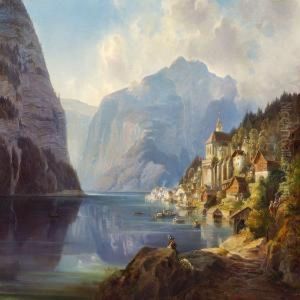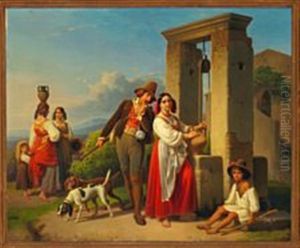Theodor Leopold Weller Paintings
Theodor Leopold Weller was a German artist known for his contributions to painting and engraving in the 19th century. Born in 1802 in Stuttgart, Weller was exposed to the rich cultural scene of Germany at a time when the country was undergoing significant transitions in the arts, influenced by Romanticism and later by the Realist movement.
Weller received his artistic training at the Stuttgart Art Academy, where he was able to hone his skills and develop a distinctive style. His early work was marked by detailed engravings and etchings, which were highly regarded for their precision and clarity. This meticulous attention to detail would become a defining characteristic of Weller's artistic output.
Throughout his career, Weller produced a variety of works, including portraits, landscapes, and historical scenes. His paintings often reflected the Romantic interest in nature and emotion, with a strong emphasis on dramatic lighting and atmospheric effects. However, he was also influenced by the emerging Realist movement, which sought to depict subjects in a more true-to-life manner, without the embellishments of Romanticism.
Weller's art was well-received in his time, and he participated in several exhibitions, gaining recognition among his peers and patrons. Despite this, he never achieved the same level of fame as some of his contemporaries, and his work was somewhat overshadowed by other German artists of the era.
Theodor Leopold Weller's contributions to German art were significant, particularly in his role as a bridge between the Romantic and Realist movements. His legacy includes a collection of finely crafted engravings and emotive paintings that capture the spirit of 19th-century Germany. Weller passed away in 1880, leaving behind a body of work that continues to be appreciated by art historians and collectors for its technical skill and historical value.
